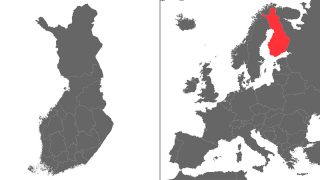Finland Joins NATO, Doubling Alliance Border With Russia

By Stefan J. Bos, Chief International Correspondent Worthy News
BRUSSELS (Worthy News)– Finland became the 31st member of the Western NATO military alliance Tuesday in a historic move that Russia had tried to prevent.
The entry of the Nordic nation doubled NATO’s land border with Russia, which immediately threatened countermeasures.
Russia’s Foreign Ministry warned that “it will be forced to take military-technical and other retaliatory measures” as Finland’s NATO membership marks “a fundamental change in the situation in Northern Europe.”
The area had “previously been one of the most stable regions in the world,” the ministry added.
In a first sign of retaliation, a pro-Russian hacker group known as NoName057 (16) claimed responsibility for a cyber attack saying it responded to Finland joining NATO.
Finland’s parliamentary website was briefly paralyzed by a denial-of-service attack on Tuesday. The attacks — in which participants flood targets with junk data — made the parliament’s site hard to use, with many pages not loading and some functions unavailable.
The personal webpage of Prime Minister Sanna Marin was also briefly down due to a denial-of-service attack, the Finnish news agency STT said.
HACKER GROUP
NoName057 (16) said the attack responded to Finland joining NATO. The hacker group participated in previous cyberattacks against the U.S. and its allies. Its latest claim could not be immediately verified.
While not addressing the cyberattacks, Kremlin spokesman Dmitry Peskov also regretted Finland’s NATO membership. He said Tuesday that Russia has no territorial disputes with Finland. Yet the country shares a 1,340-kilometer (832-mile) border with Russia, and its entry into NATO on Tuesday doubled the size of the alliance’s frontier with Russia
However, Finnish Defense Minister Antti Kaikkonen suggested that with Moscow’s invasion of Ukraine ongoing, it was crucial to be part of NATO’s security umbrella.
“Until now, we have defended our country alone,” Kaikkonen told Finnish public broadcaster YLE on arrival in Brussels. “From now on, we can rely on getting outside help should things get tough. And, of course, we are ready to help should someone be in trouble.”
His Nordic Nation’s flag was later raised at a ceremony in Brussels which fell on the 74th anniversary of the signing of NATO’s founding Washington Treaty on April 4, 1949.
NATO Secretary-General Jens Stoltenberg said Finland had undergone the fastest ratification process in the alliance’s history. However, Stoltenberg stressed that NATO would not send more troops to the Nordic country unless it asked for help.
“There will be no NATO troops in Finland without the consent of Finland,” Stoltenberg told reporters at NATO headquarters in Brussels, Belgium.
MILITARY EXERCISES
But he refused to rule out the possibility of holding more military exercises there and said that NATO would not allow Russia’s demands to dictate the organization’s decisions.
“We are constantly assessing our posture, our presence. We have more exercises, we have more presence, also in the Nordic area,” he said.
Last week, Turkey became the last NATO member country to ratify Finland’s membership protocol.
However, Turkey and Hungary have so far refused to ratify Sweden’s membership. Turkey claims Sweden hosts “terrorists” that rights activists say are peaceful Kurdish opponents of Turkish President Recep Tayyip Erdoğan.
Hungarian legislators also held up ratification saying Sweden spread “blatant lies” about Hungary’s perceived lack of democratic credentials and troubled rule-of-law situation.
However, Finland’s President Sauli Niinisto said his nation’s “membership is not complete without Swedish membership. The work for Sweden’s early membership continues relentlessly.”
Back in Finland, there were mixed reactions, including from Eija Hiltunen and Eero Tuomisto, a couple owning a bed-and-breakfast, a short cross-country ski trip to the east from Russia.
DAIRY GOODS
Located in the Karelia region, it was an excellent place to stay when they came to buy dairy goods and dish soap in the closest part of the European Union.
For Fins, the Kuuksenkaari bed-and-breakfast was an outpost to buy cheap gas and car parts in nearby Russia and visit sites of the clashes between Finnish forces and the Soviet Red Army during World War II.
For Eija Hiltunen, who moved to the northern Karelia region with her husband more than a decade ago, Finland becoming part of the world’s biggest security alliance was an unnecessary provocation.
“For the past fifteen, twenty years now, things have been quiet here on the border. It has been easy to cross the border, and there have been plenty of cross-border activity,” Hiltunen told The Associated Press (AP) news agency. Her husband, a retired business journalist, peacefully disagreed. “I think it feels somewhat safer now,” said Tuomisto, whose grandfather fought against the Soviet Red Army in clashes in the region during World War II.
“There is no uncertainty anymore. The previous crisis (World War II) isn’t that far behind us. You can see it all around here. No one has forgotten our history with Russia.”
In Helsinki, the capital, the Foreign Ministry officials seemed to agree. The NATO flags were raised alongside the national flags in front of the Ministry of Foreign Affairs, a building originally built for the military of the Russian Empire in the 19th century.
Curious onlookers could be seen near the gates of the foreign ministry. It was on that same ministry building that Finnish authorities projected the colors of the Ukrainian flag after Russia’s invasion last year.
Newspapers, leaders, and commentators agreed that Tuesday was a historic day for the Nordic nation of 5.5 million people.
